It’s Spring! Time to plant a victory garden
Thanks to Trump’s tariffs, everyone is going to be paying more for fruits and vegetables this year. Here are some posters to inspire you to grow your own, on both sides of the border.
It’s spring, when many people start planting a garden. This year, it should be a victory garden, which will be particularly useful in dealing with insecure incomes and the rising costs of food because of the tariff wars launched by the USA. This will affect everyone on either side of the border; according to Eating Well, USA citizens will suffer:
In the weeks after tariffs against Canada go into effect, shoppers can expect to see a rise in prices of foods with high U.S. import volumes, including beef and seafood, cereals, legumes and maple products. As for the effect of tariffs on Mexico, Americans will most certainly see increases in the price of a long list of fruits and vegetables, including avocados, tomatoes, peppers, berries, cucumbers and greens, as well as for sugar, orange juice products and some cuts of meat.
Canadians will have it a lot worse; according to Agriculture Canada.
As the fifth-largest fresh vegetable importer worldwide by value with a 5.6% share, Canada imported more than $3.9 billion in fresh vegetables in 2023, representing an increase of 2.1% over 2022. Nearly $2.4 billion in field vegetable imports (60.1%) were sourced from the United States. Mexico was the second-largest source of Canadian field vegetable imports, with over $968 million (24.3%) in import value.
Mexican vegetables travel to Canada by truck through the USA “in bond” where they are not subject to US taxes, but they are subject to inspections and paperwork and who knows what the US will do with that. Can Canadian growers go from 15% of the market to meet Canadian needs? Not likely, particularly since so much of it comes from southern Ontario and Doug Ford is paving over the best farmland. It will have to come from everyone pulling and planting together, as we did in both World Wars.
I have been collecting inspirational posters from Canada, the USA, and the UK for years and used to show them on Treehugger. Here are some to inspire you to get out and plant, with a bit of history, starting with the First World War.
Canada entered the Great War a few years before the USA, so it got a head start in the poster biz, with Grandma showing Mom how it's done and the kids dragging Dad out to help.
Once the U.S. went to war, Charles Lathrop Pack, described as "one of the five wealthiest men in America prior to World War I" organized the National War Garden Commission to get everyone to work, usually with the help of this unsmiling woman wrapped in a flag.
Here's Pack, marshaling his troops. "Uncle Sam expects every war garden to do its duty!"
Miss Liberty was like that modern stock photo person who gets used over and over. She was everywhere and she never smiled.
Uncle Sam would step in and help the cause, and he didn't smile much either.
Reducing waste is important; we still talk about it. But really, "The greatest crime in Christendom," wherever that is, is again a bit dire and a bit of an overstatement. But the small print at the bottom—"Eat less. Waste nothing. Live simply. Avoid food waste"—still resonates.
In the Second World War, the ad people moved in, and everything got a lot more professional and upbeat, with people whistling while they work and smiles of satisfaction with a job well done on their faces. British posters were punchy and graphic.
According to the British Library, it is all still relevant.
"The 'Dig for Victory' campaign was set up during WWII by the British Ministry of Agriculture. Men and women across the country were encouraged to grow their own food in times of harsh rationing. Open spaces everywhere were transformed into allotments, from domestic gardens to public parks—even the lawns outside the Tower of London were turned into vegetable patches. Leaflets, such as the one shown here, were part of a massive propaganda campaign aiming both to ensure that people had enough to eat, and that morale was kept high. The current recession, as well as a new awareness of 'food miles' and climate change, has increased the demand for vegetable growing plots and the trend is supported by new, comparable government initiatives."
Americans soon caught on, with happy, smiling families going off to plant gardens for victory.
Grow your own to be sure!
And then, of course, it all has to be processed and canned so we will have lots to eat this winter. Did it, and can it, still make a difference? According to Claudia Reinhardt,
"The US Department of Agriculture estimates that more than 20 million victory gardens were planted. Fruit and vegetables harvested in these home and community plots was estimated to be 9-10 million tons, an amount equal to all commercial production of fresh vegetables. So, the program made a difference."
Early in the pandemic, Toronto author and food writer Lorraine Johnson called for everyone to tear up their lawns and plant victory gardens.
"The time is ripe to fill front yards with food, to discover that insects are necessary for pollination, and to see the connections between our gardens and the local ecology. Let’s grow tons of food. And let’s grow it so it gets to those of us who are most vulnerable and marginalized. Let’s grow a generation of kids who know where food comes from, who participate in producing some of it, and who thus become healthy eaters. Bonus: they’ll learn about nature."
Today, in Canada, it’s all about security of our food supply, independence from USA grown products, and perhaps taking our surpluses to help the estimated 1.5 million Canadians who might lose their jobs due to the tariff war.
But it can be fun for the family, the food will taste better, and we’ll save money. Don’t forget to plant some root vegetables for next winter, and don't forget to eat your leftovers!
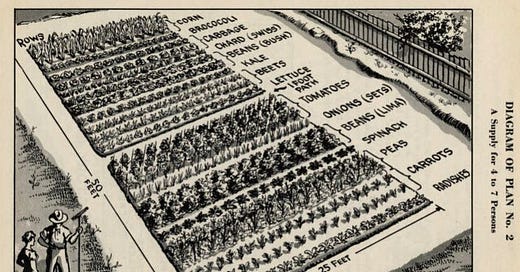



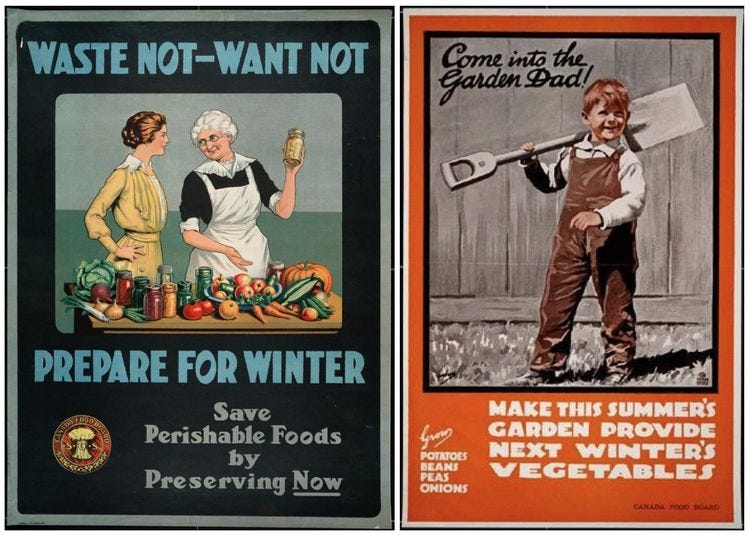
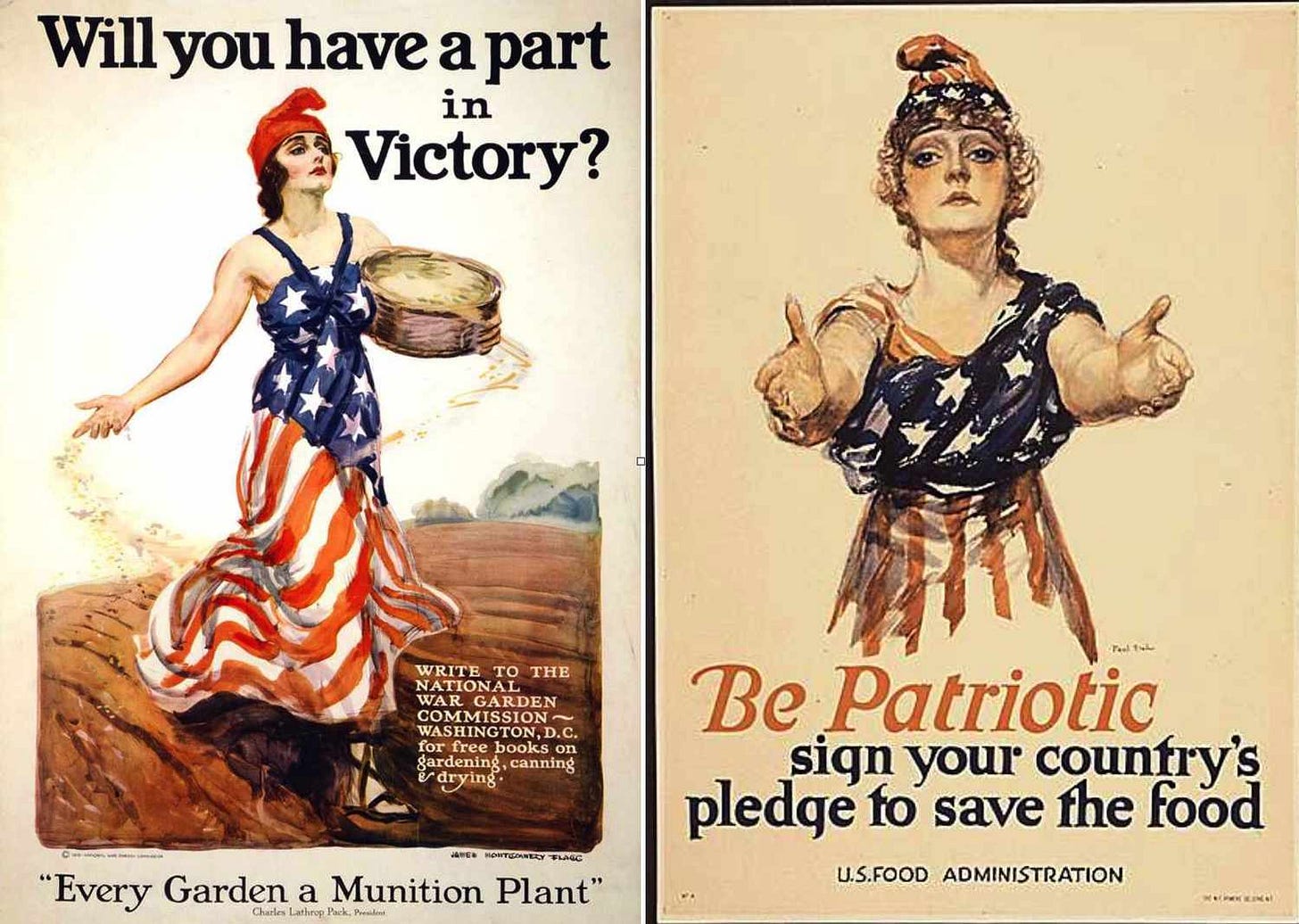
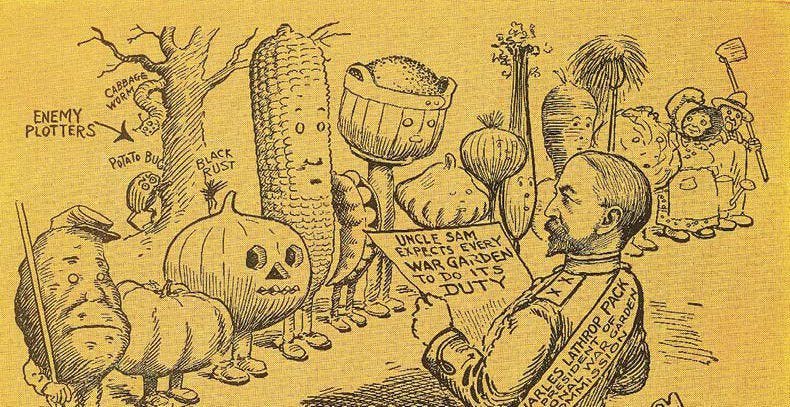
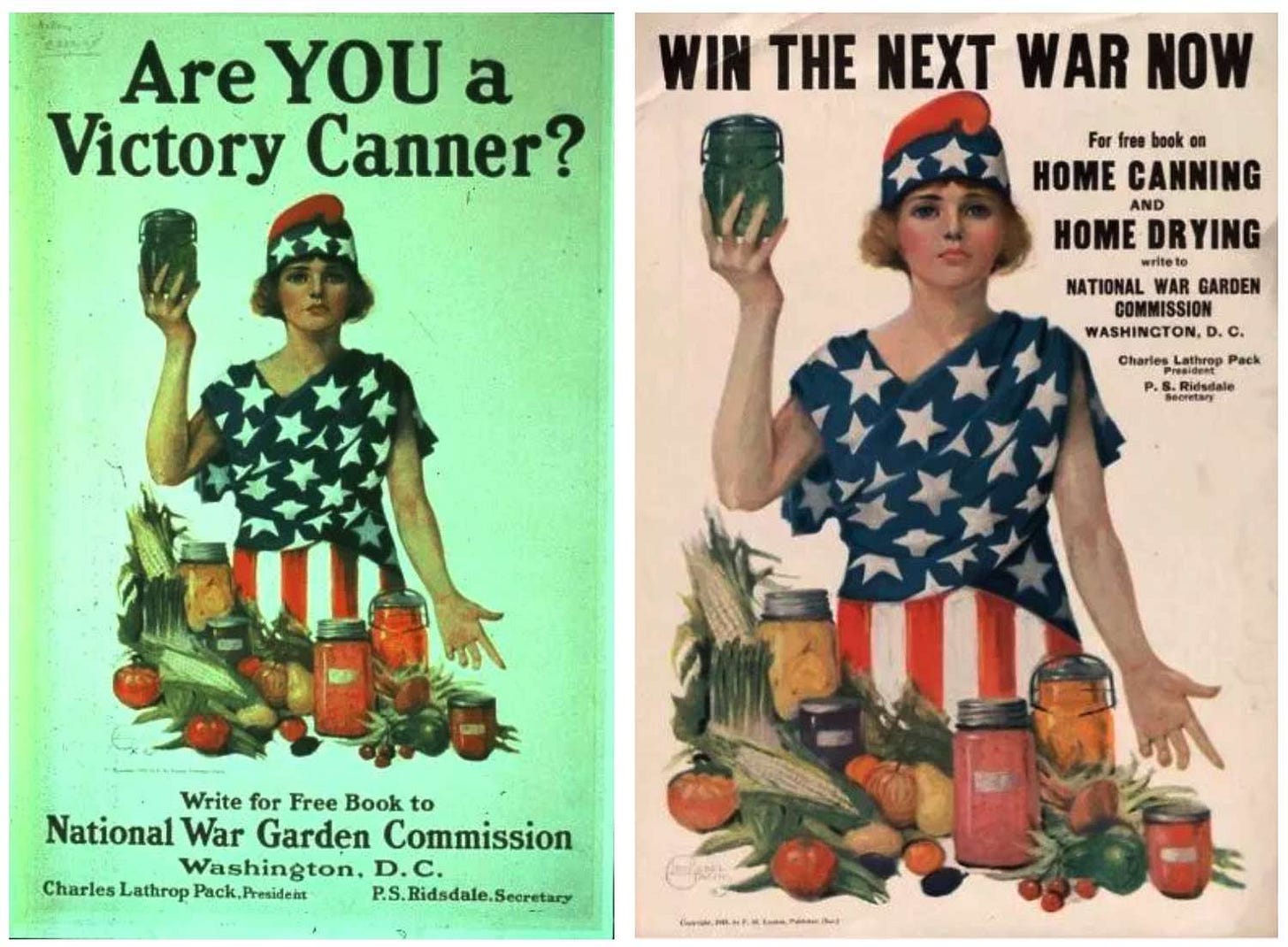
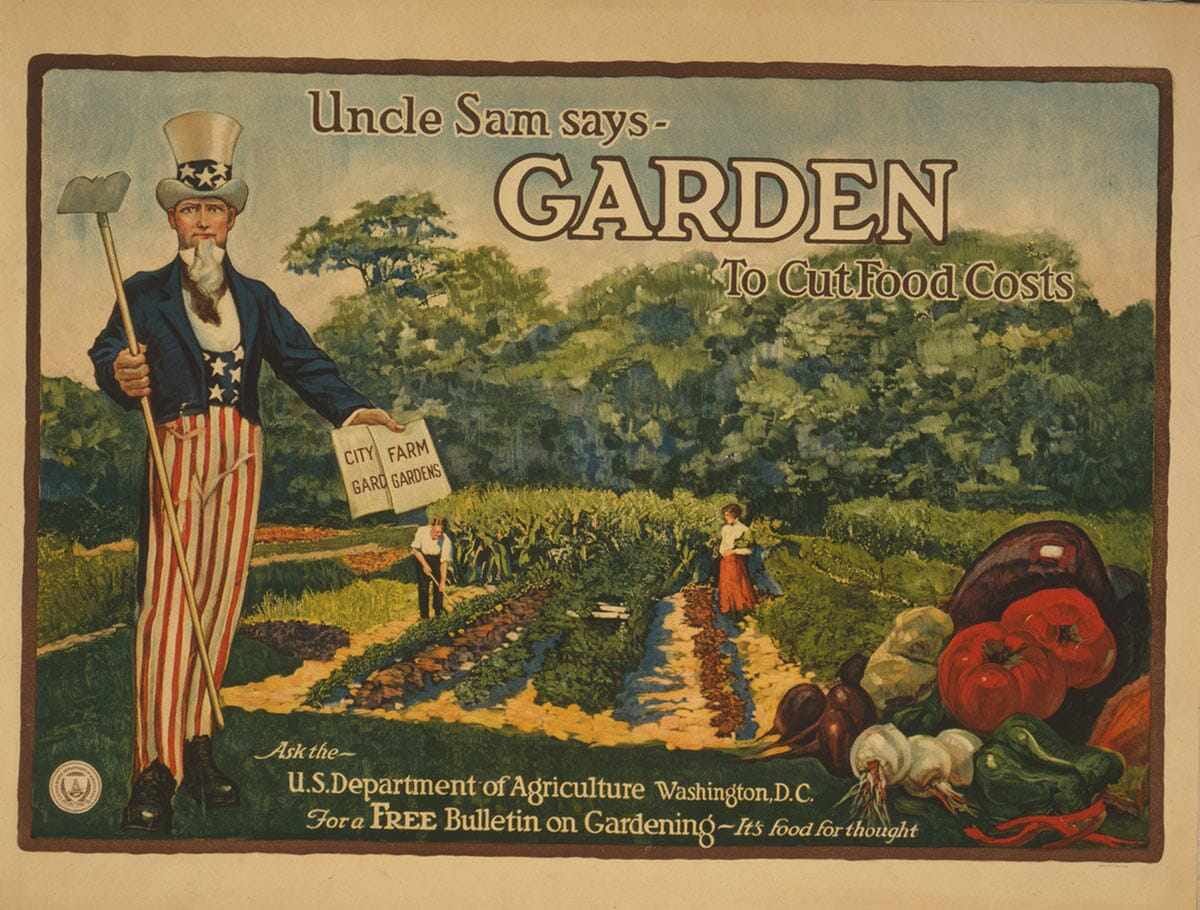
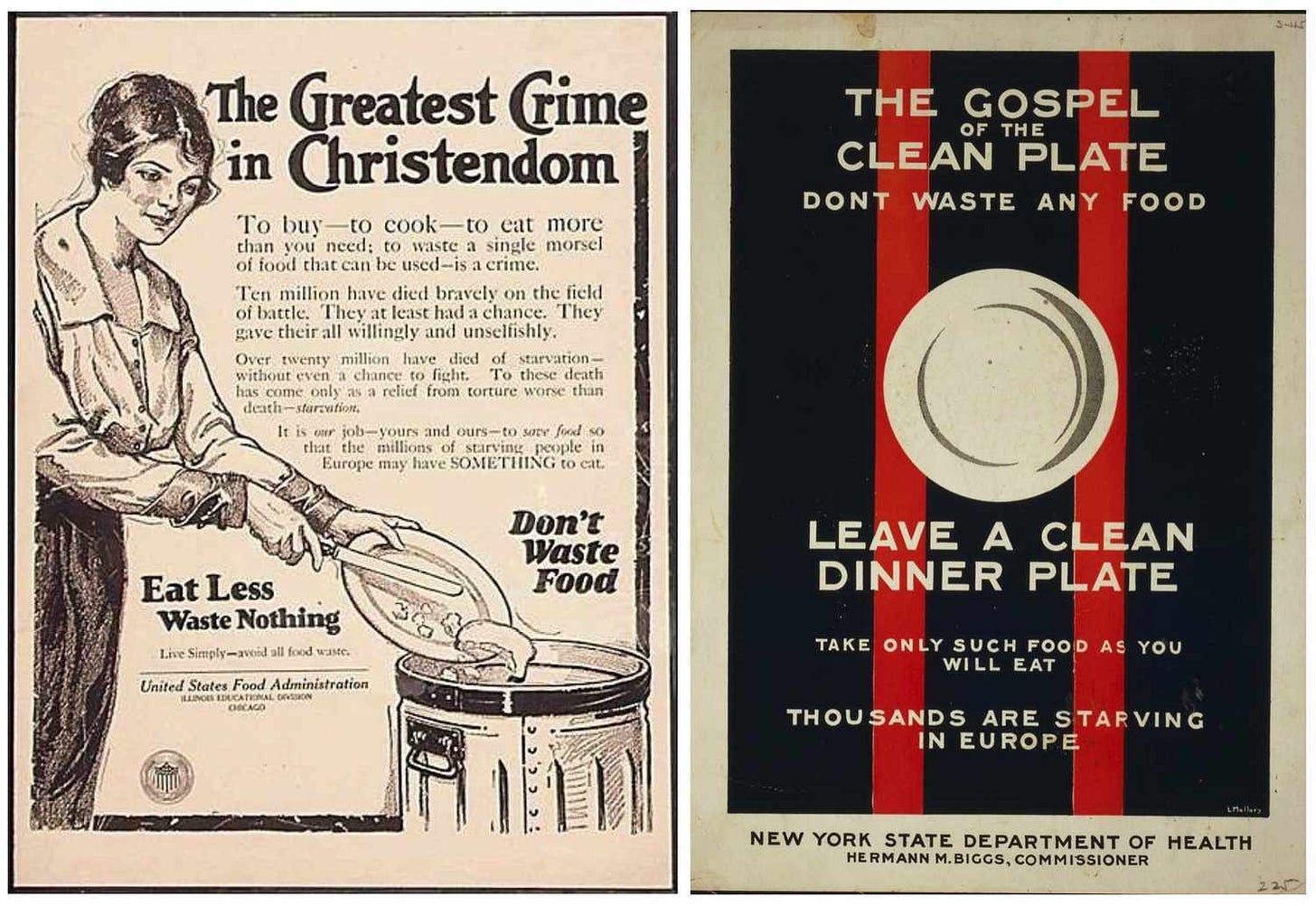

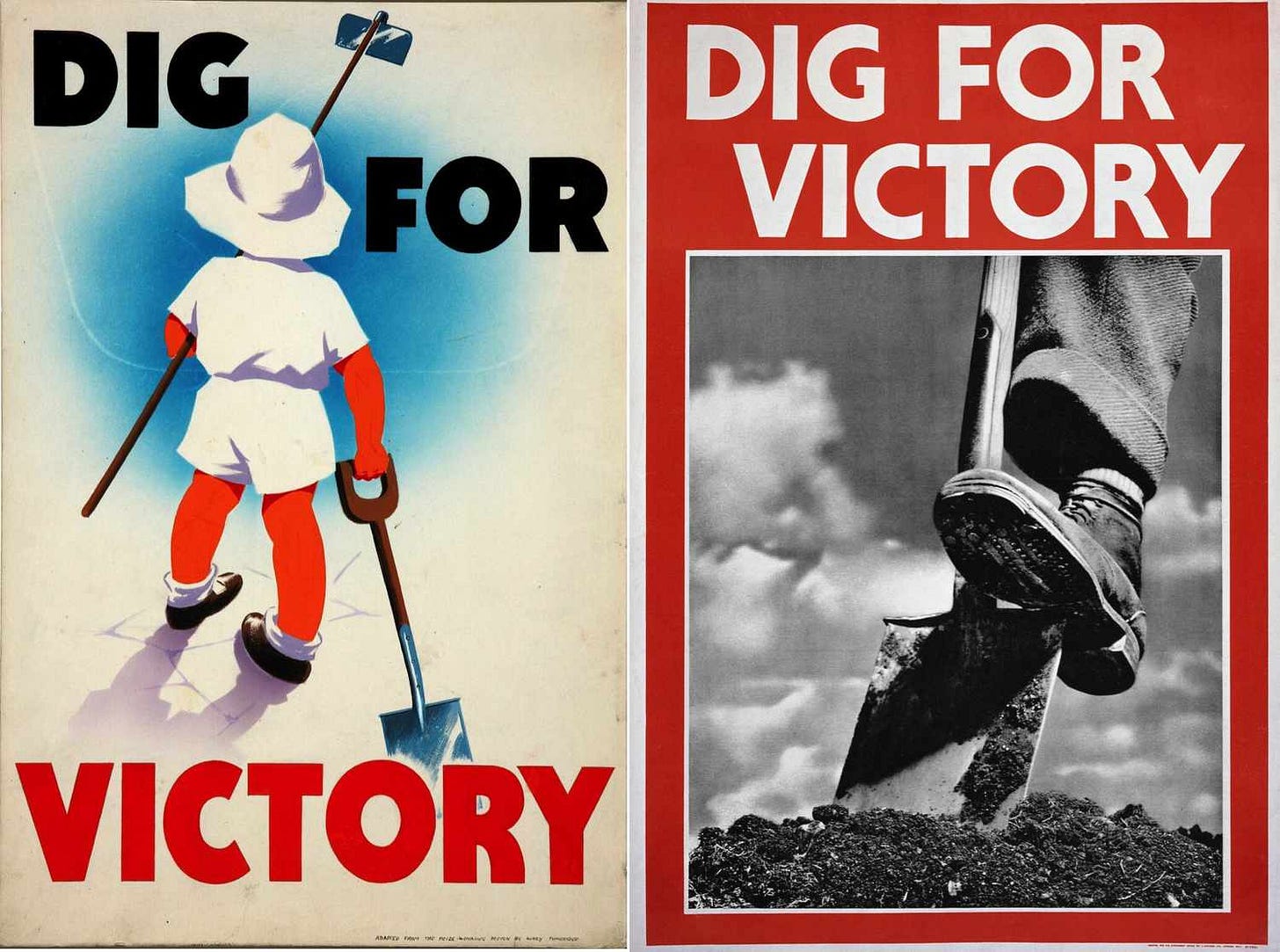

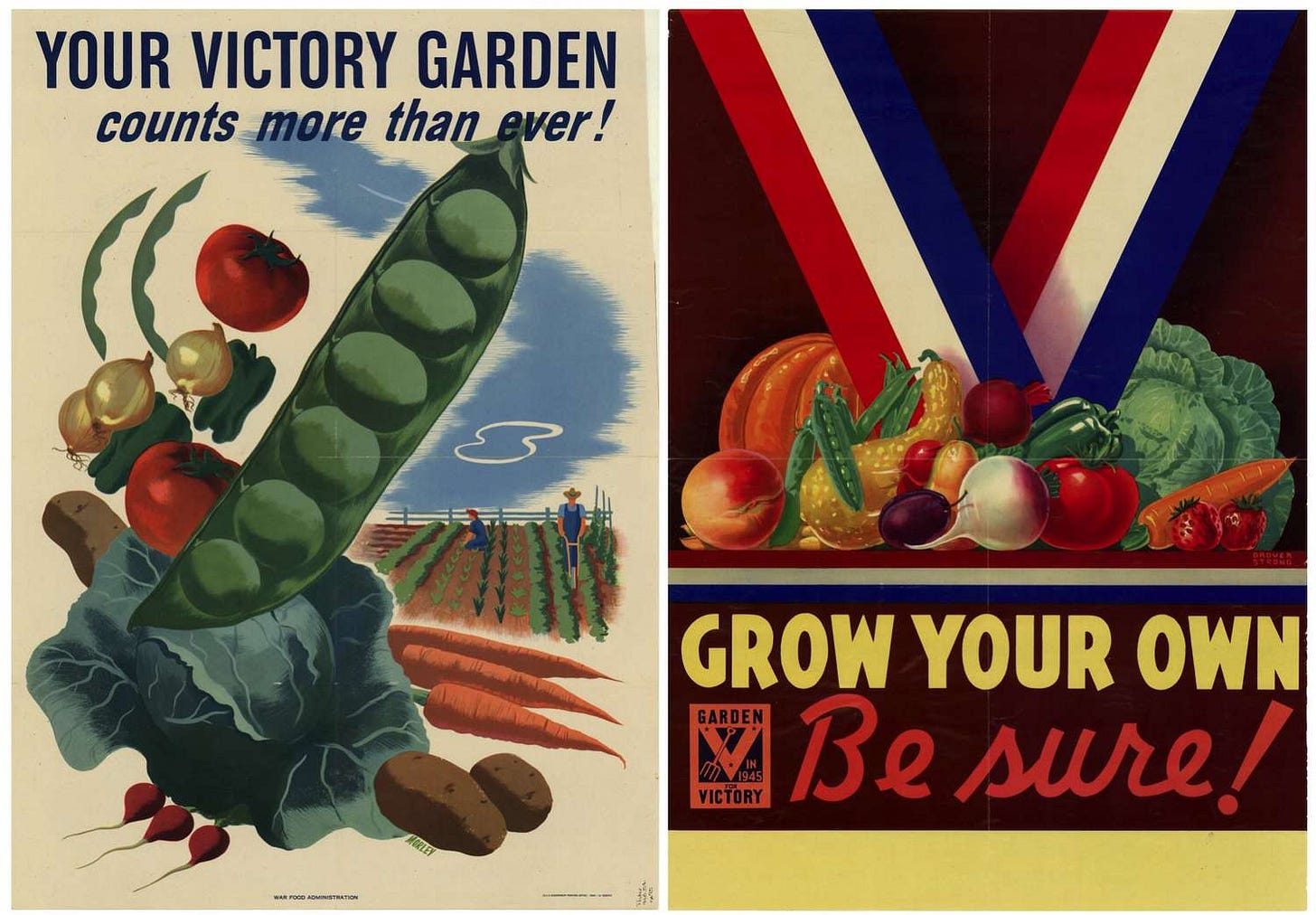
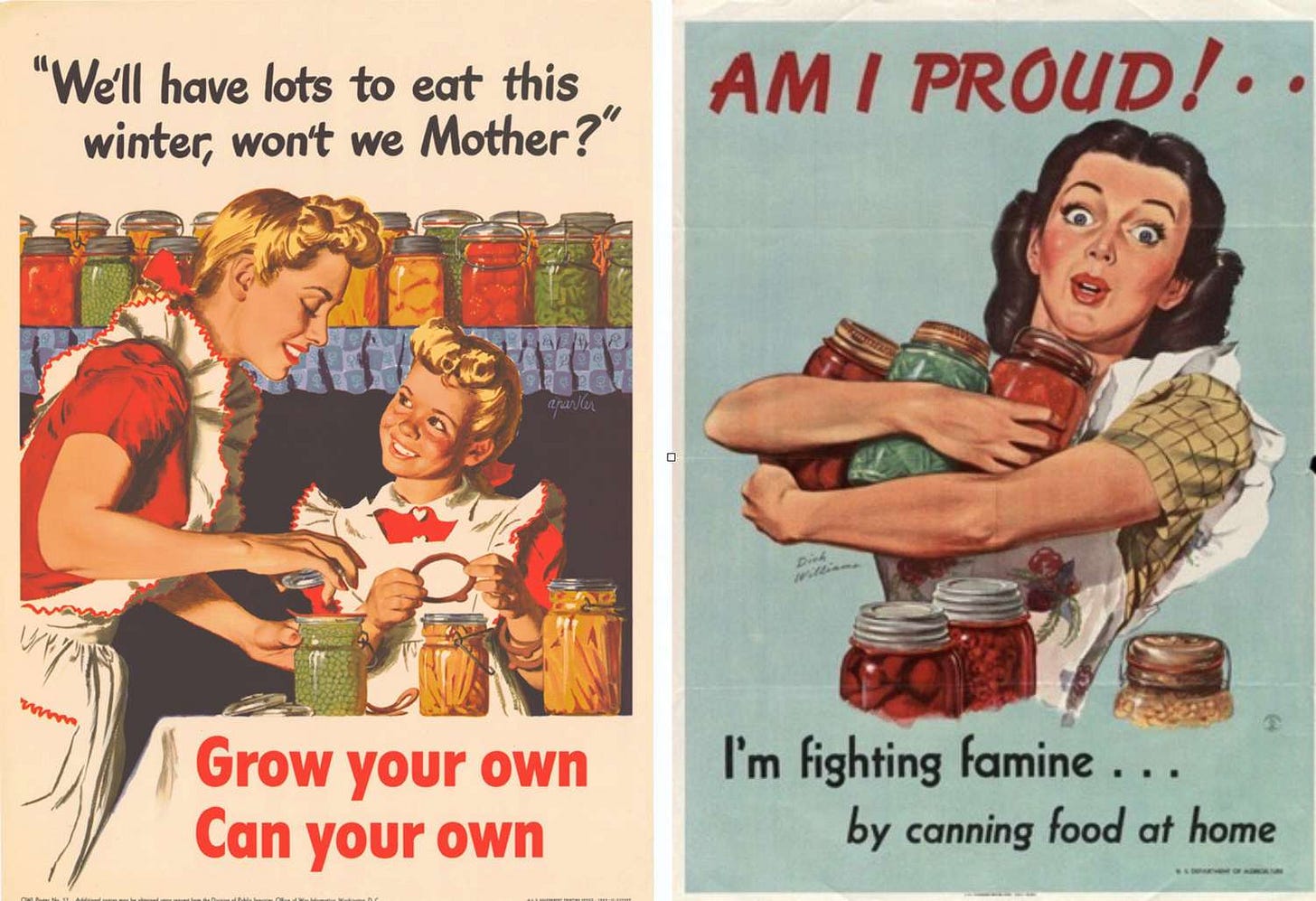
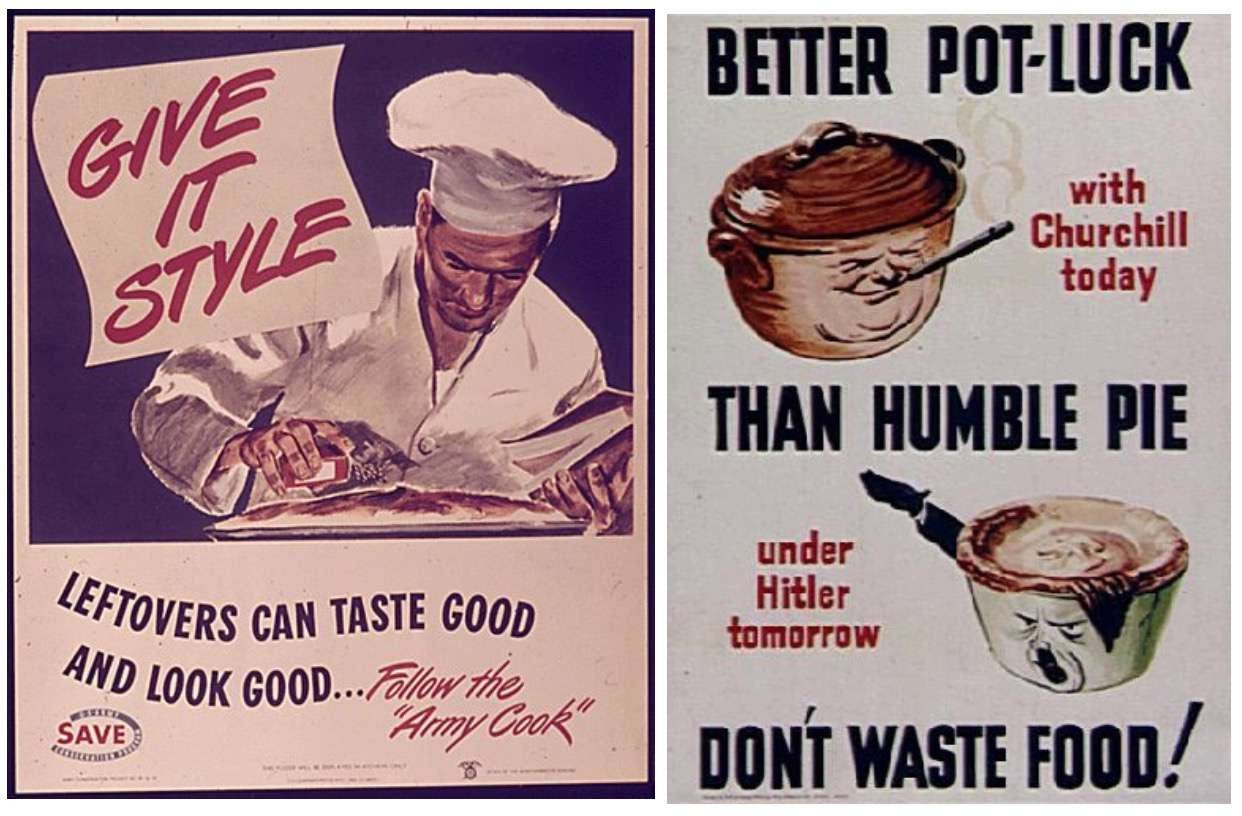
Those Victory Gardens were very successful. “During the war, the U.S. Department of Agriculture estimated that half the families in the country cultivated Victory Gardens, resulting in more than 20 million gardens that put into productive yield about four million acres, a total landmass greater than the state of Connecticut. Although drought brought failures in Oklahoma, portions of Texas, and the Washington, DC, area, the rest of country enjoyed a bounty. The combined amount of food produced from the Victory Gardens totaled eight million tons, enough to feed the entire U.S. Army, or about 125 pounds of produce for every man, woman, and child in the U.S. This immense productivity was the achieved before the use of industrial fertilizers and other “green revolution” technologies.” https://greendispatch.substack.com/p/its-time-to-start-planning-that-garden
My grandmother told me stories of a group of friends renting a small canning factory to put their Victory Garden harvests up. They split the costs and cans and got a wide assortment of food.
I too have an indoor victory garden as my garden is truly shady. I have been growing citrus under lights and recently added an expensive modular hydroponic system , which has paid for itself by providing enough greens,herbs and peas for my small household so no purchases needed for months.
Modern tools like dehydrators and vacuum sealers make putting food by a realistic option for those with smaller families or who live in smaller places.